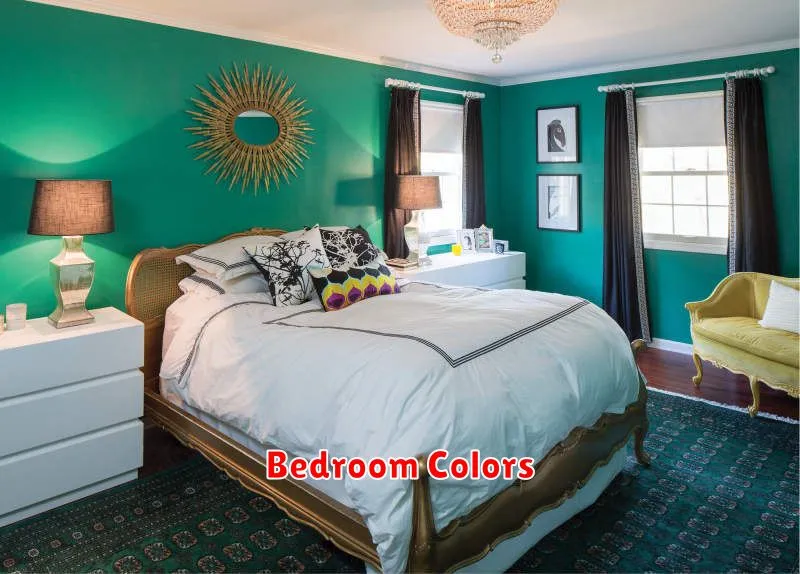Creating a serene and relaxing atmosphere in your home is paramount, and what better way to achieve this than through carefully curated bedroom color schemes? This article explores five stunning and scientifically proven palettes designed to transform your five-bedroom home into an oasis of calm. Discover how the right color combinations can significantly impact your sleep quality and overall well-being, fostering a truly peaceful and inviting space. Learn how to choose the perfect shades for a restful retreat in your own 5-bedroom house, offering relaxation and tranquility for every member of the family.
Soft Neutral Shades
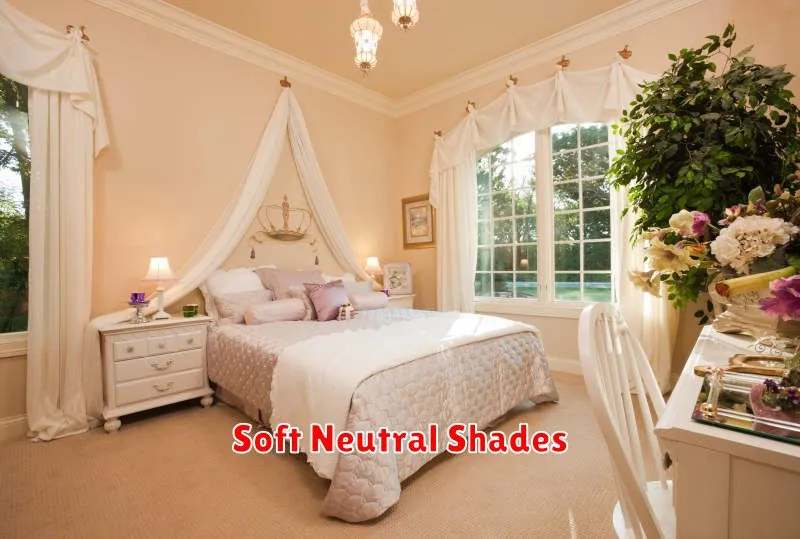
Neutral shades are experiencing a surge in popularity in interior design, offering a versatile and calming backdrop for any space. Their understated elegance allows for creative freedom in incorporating pops of color or bolder textures without overwhelming the overall aesthetic.
The softness of these neutrals is key. We’re not talking stark whites or harsh grays; instead, think creamy whites, warm beiges, and subtle greiges – hues that evoke a sense of tranquility and sophistication.
These versatile tones work beautifully in various settings. A soft neutral palette can create a serene bedroom oasis, a welcoming living room, or a functional yet stylish kitchen. They seamlessly blend with different styles, from minimalist to traditional, offering a timeless appeal.
One of the significant advantages of employing soft neutral shades is their ability to make a space feel larger and brighter. Lighter tones reflect light, maximizing natural illumination and creating an airy atmosphere. This is particularly beneficial in smaller rooms.
The range of soft neutral shades is extensive, allowing for personalized expression. From the cool undertones of a light gray to the warm embrace of a creamy beige, the possibilities are virtually limitless, ensuring a perfect match for individual tastes and preferences. Consider the direction your room faces and the amount of natural light when choosing your preferred shade.
To avoid a monotonous look, consider incorporating textural elements. Layer different fabrics, such as linen, wool, or velvet, to add visual interest and depth. The interplay of textures will enhance the overall richness of the neutral palette, preventing it from feeling flat or bland.
In conclusion, soft neutral shades provide a timeless and elegant foundation for interior design. Their versatility, calming effect, and ability to enhance the perception of space make them an ideal choice for creating a sophisticated and inviting atmosphere in any room.
Calming Blues and Greens
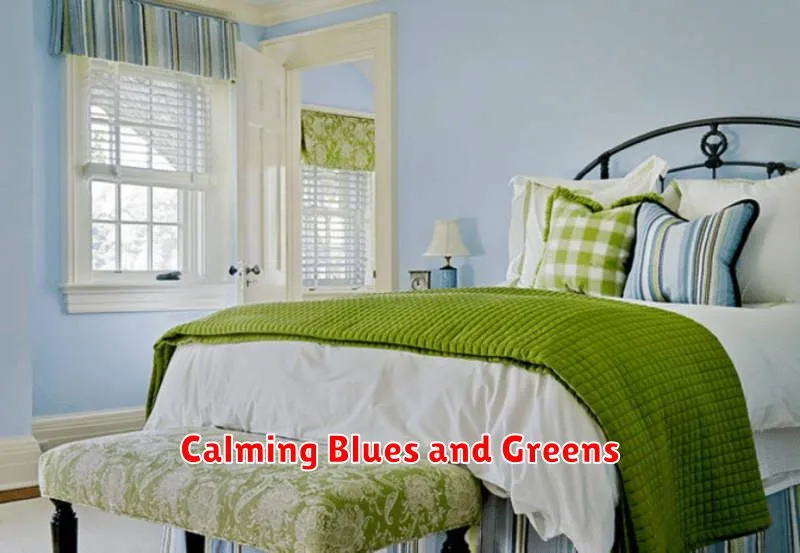
The colors blue and green are frequently associated with feelings of calmness and tranquility. Their presence in a space can significantly impact the mood and atmosphere, promoting relaxation and reducing stress.
Blue, often described as serene and peaceful, evokes a sense of security and stability. Different shades offer varying degrees of this effect; lighter blues feel airy and open, while deeper blues can be more contemplative and grounding.
Similarly, green is intrinsically linked to nature, fostering feelings of rejuvenation and serenity. Shades ranging from the bright, vibrant green of spring leaves to the deep, mossy green of a forest can all contribute to a sense of calm and well-being. The subtle variations in hue can be used to create a diverse and soothing environment.
The combined use of blues and greens creates a particularly powerful effect, often described as naturally harmonious. The subtle interplay between these colors enhances their individual calming properties, resulting in an environment conducive to relaxation and contemplation. This palette is frequently employed in spaces designed for rest and rejuvenation, such as bedrooms and spas.
Beyond the psychological impact, the practical application of blue and green is also noteworthy. These colors are versatile and can be easily incorporated into various design schemes, from minimalist to maximalist aesthetics. Their adaptability makes them a popular choice for interior decoration and exterior landscaping alike.
In conclusion, the calming properties of blue and green make them valuable tools in creating peaceful and restorative environments. Their versatility and widespread appeal solidify their position as leading choices for those seeking to design spaces that promote tranquility and well-being.
Warm Earth Tones
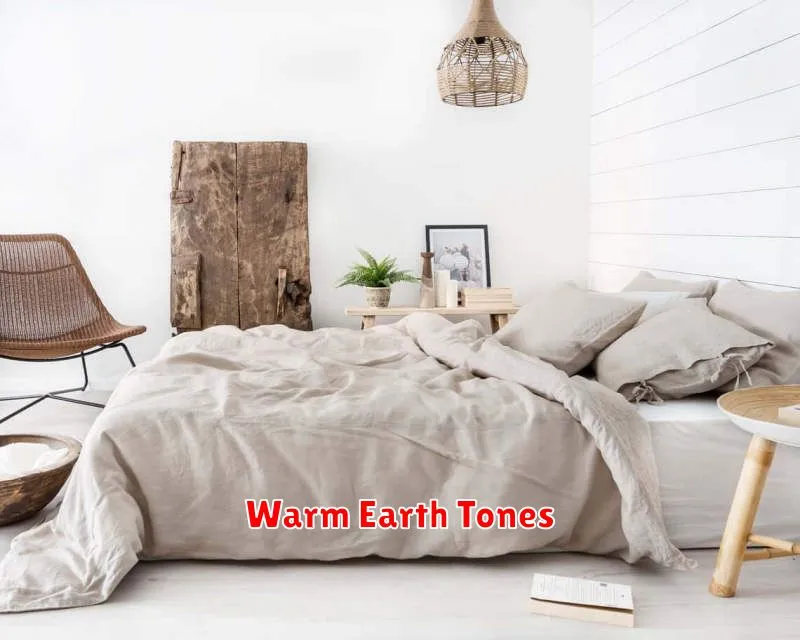
Warm earth tones are a versatile and timeless color palette, drawing inspiration from the natural world. They evoke feelings of comfort, stability, and groundedness, making them ideal for a variety of design applications.
This palette typically features shades of brown, ranging from light beige and taupe to deep chocolate and espresso. It also incorporates variations of red, such as terracotta and burnt sienna, and nuances of yellow, like ochre and mustard. These colors often blend seamlessly, creating a harmonious and sophisticated aesthetic.
The beauty of warm earth tones lies in their adaptability. They can be used to create both modern and rustic interiors, depending on the chosen materials and textures. In a minimalist setting, muted earth tones can provide a sense of calm and tranquility. Conversely, when paired with natural materials like wood and stone, they contribute to a warm and inviting rustic atmosphere.
Furthermore, warm earth tones pair exceptionally well with a variety of other colors. They complement neutrals such as cream and gray, enhancing their subtle elegance. They can also be combined with accent colors like deep blues, greens, or even vibrant jewel tones for a more dramatic effect, offering a balanced and sophisticated contrast.
The use of warm earth tones extends beyond interior design. They are frequently seen in fashion, where they contribute to a classic and enduring style. In graphic design, they lend themselves to a feeling of natural authenticity and reliability. Their versatility and inherent appeal make them a consistently popular choice across diverse creative fields.
In conclusion, the appeal of warm earth tones stems from their inherent connection to nature and their remarkable adaptability. Their ability to create a sense of calm and sophistication makes them a compelling choice for designers and artists seeking to cultivate a feeling of warmth, stability, and natural beauty in their work.
Elegant Grey and White
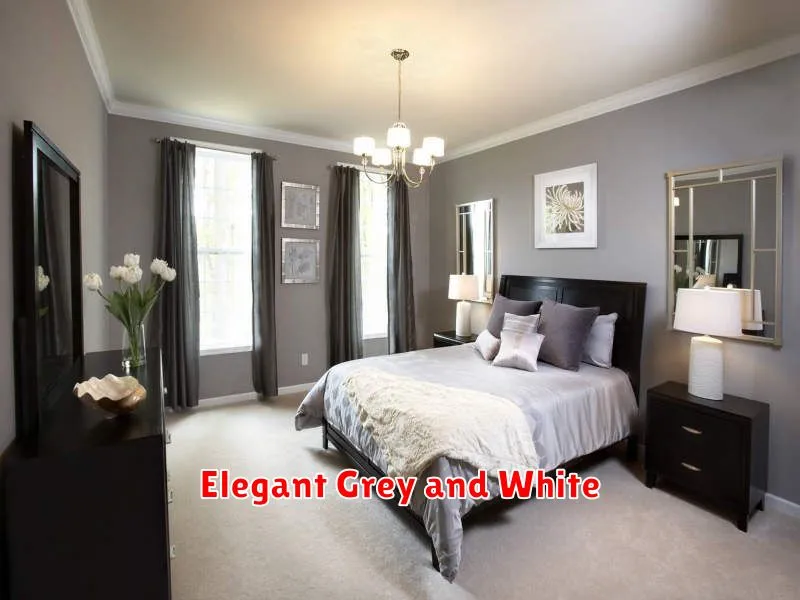
The pairing of grey and white creates a sophisticated and timeless aesthetic. This classic combination offers versatility, working equally well in modern and traditional settings. The neutrality of the palette allows for creative freedom in incorporating accent colors and textures.
Grey, in its many shades, from charcoal to pale dove grey, provides a sense of calm and sophistication. It acts as a beautiful backdrop, highlighting the crispness of white and allowing other elements within the space to truly shine. White, on the other hand, offers a sense of airiness and brightness, counterbalancing the potential heaviness of grey. The interplay between these two colors creates a balanced and harmonious effect.
This color scheme lends itself well to various design styles. A minimalist approach might utilize stark contrasts between the two shades, while a more traditional design could incorporate patterned fabrics and ornate details, all within the grey and white framework. The texture of materials plays a crucial role; think soft, plush fabrics against smooth surfaces for a luxurious feel.
Furthermore, the adaptability of grey and white is unparalleled. It’s a perfect foundation for any room in the house, from the living room to the bedroom, and even the bathroom. Adding pops of color through artwork, accessories, or plants can easily personalize and refresh the space without compromising the overall elegant feel.
In conclusion, the elegant combination of grey and white provides a resilient and stylish foundation for any interior design project. Its inherent versatility and timeless appeal make it a consistently popular choice for those seeking a sophisticated and calming atmosphere.
Pops of Pastel for Brightness
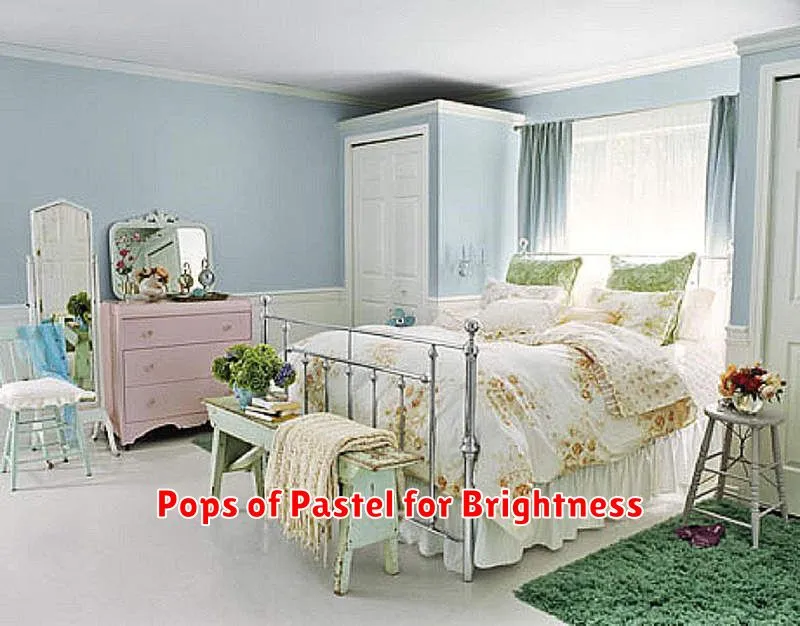
Pastel shades, often associated with springtime and a sense of gentle calm, can surprisingly add a vibrant and bright touch to any space. Contrary to popular belief, pastels aren’t just for delicate, understated designs. Used strategically, they can create a dynamic and energetic atmosphere.
The key lies in understanding how to contrast and complement these softer hues. Pairing a pale lavender with a rich teal, for instance, creates a sophisticated and unexpected contrast. Similarly, using a light mint green alongside a warm, creamy yellow evokes a feeling of cheerful optimism.
Texture plays a crucial role in maximizing the impact of pastels. A fluffy pastel pink throw blanket on a crisp white sofa, or a matte pastel blue vase filled with textured branches, adds depth and visual interest. Avoid using too many glossy surfaces with pastel colors, as this can lead to a washed-out or uninspired effect.
Don’t be afraid to experiment with saturation. While the traditional definition of pastel implies muted tones, incorporating slightly bolder shades of pastel can inject a playful energy. A more saturated pastel blue, for example, might provide a striking contrast against a lighter background.
Ultimately, the use of pastel colors should be guided by your personal preference and the overall aesthetic you’re aiming for. Whether you’re decorating a child’s room or a modern living space, strategic use of pastels can lead to a bright, inviting, and unexpectedly bold design.

